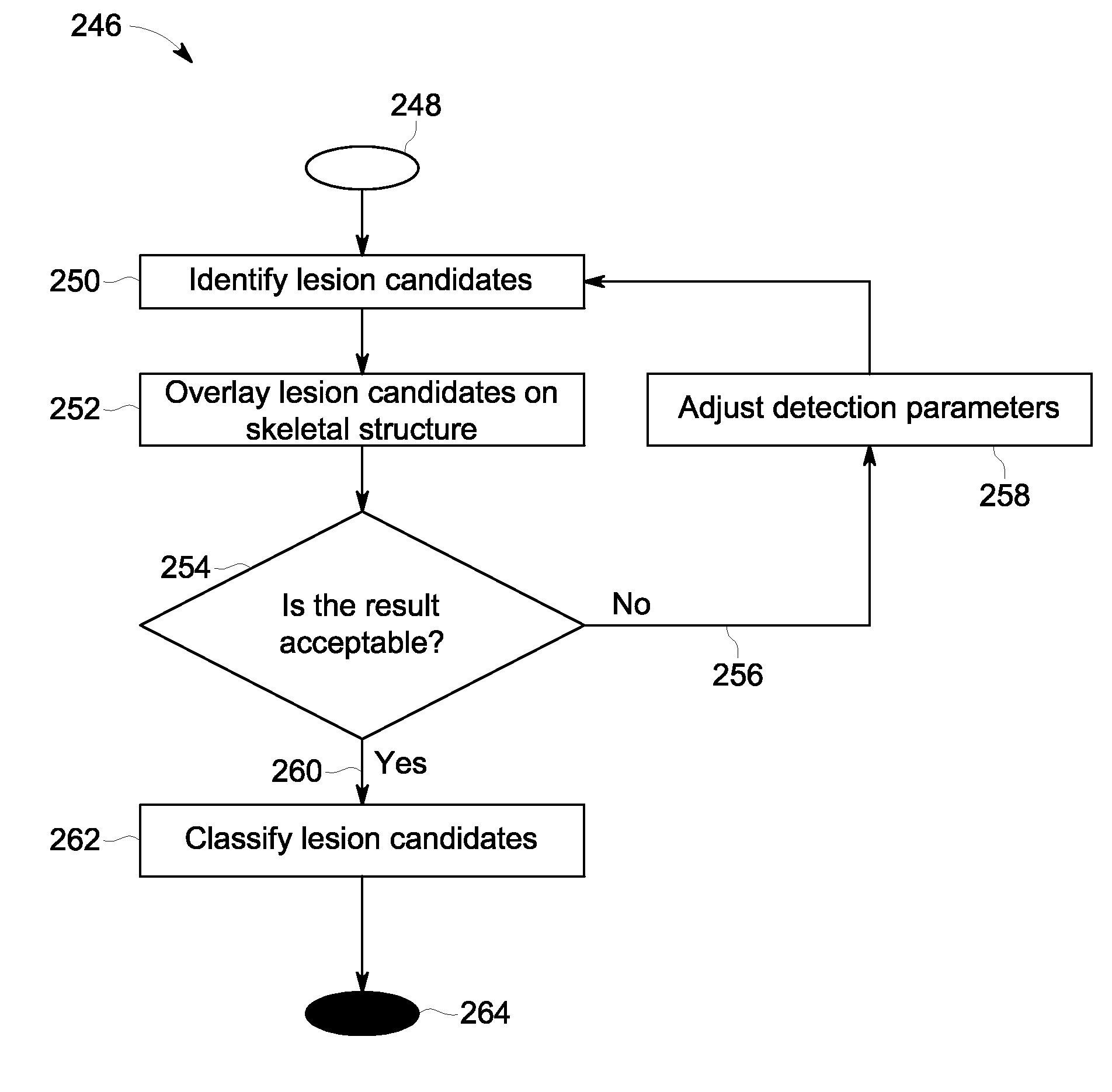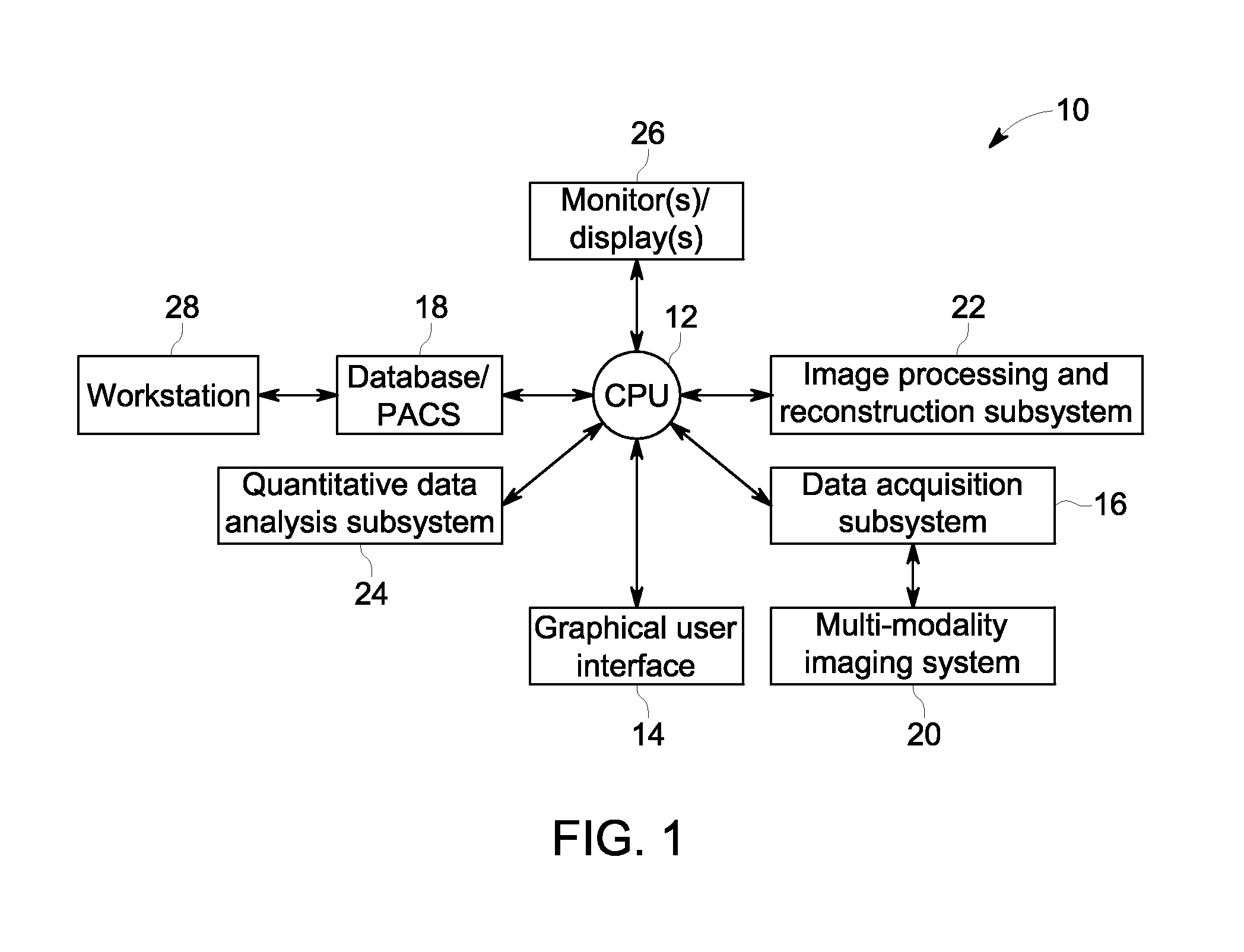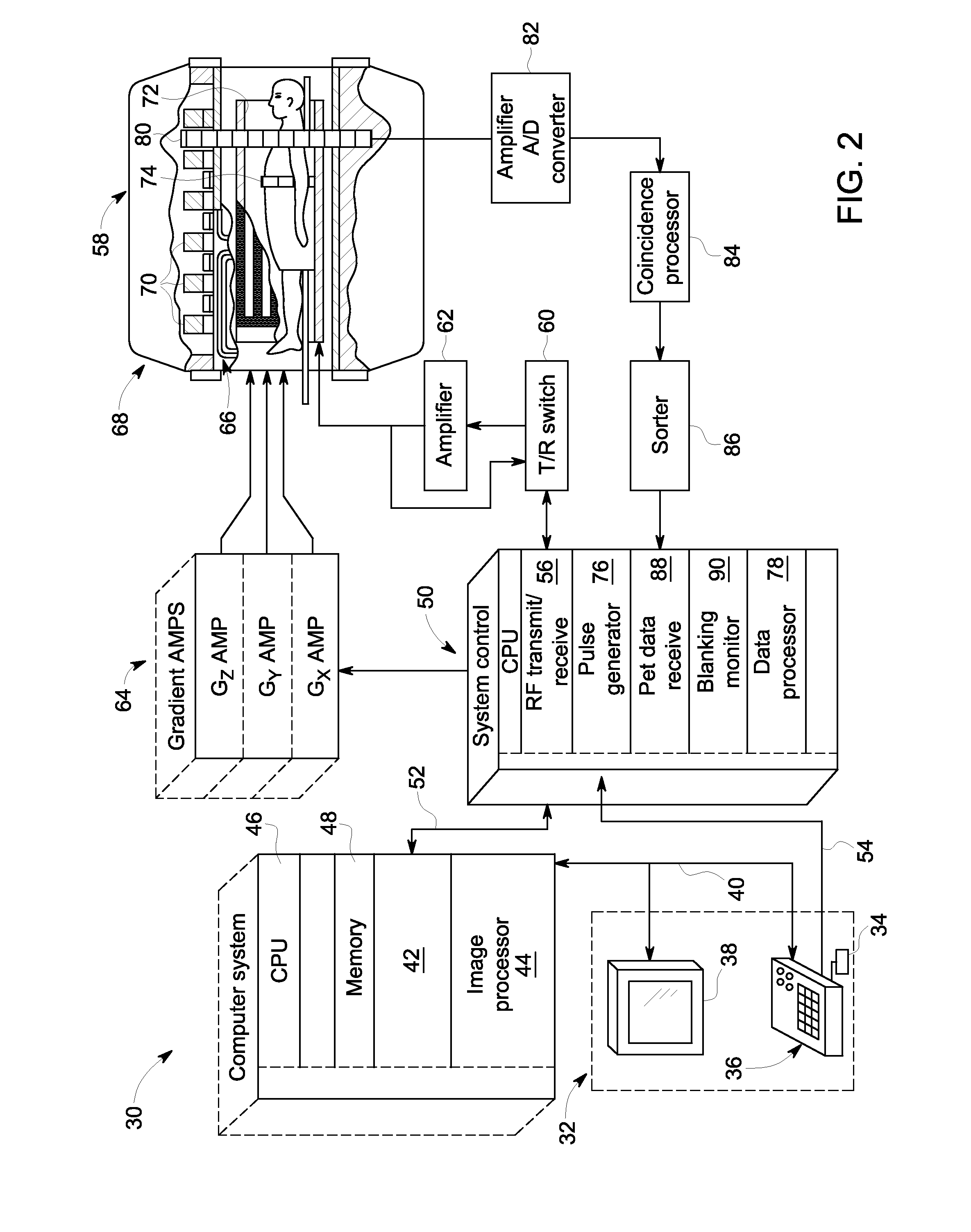Methods and systems for evaluating bone lesions
a bone lesions and image data technology, applied in the field of medical diagnostics and treatment assessment, can solve the problems of manual segmentation of skeletal structure and manual detection of lesions, large inter-operator variability, and inaccurate quantitative analysis of skeletal structur
- Summary
- Abstract
- Description
- Claims
- Application Information
AI Technical Summary
Benefits of technology
Problems solved by technology
Method used
Image
Examples
Embodiment Construction
[0022]The operating environment of embodiments of the invention is described below with respect to a multi-modality imaging system that includes a positron emission tomography (PET) imaging system and one of an magnetic resonance (MR) imaging system and a sixty-four-slice, “third generation” computed tomography (CT) imaging system. However, it will be appreciated by those skilled in the art that the invention is equally applicable for use with other multi-slice configurations and with other CT imaging systems. In addition, while embodiments of the invention are described with respect to techniques for use with MR or CT imaging systems and PET imaging systems, one skilled in the art will recognize that the concepts set forth herein are not limited to CT and PET and can be applied to techniques used with other imaging modalities in both the medical field and non-medical field, such as, for example, an x-ray system, a single-photon emission computed tomography (SPECT) imaging system, o...
PUM
 Login to View More
Login to View More Abstract
Description
Claims
Application Information
 Login to View More
Login to View More - R&D
- Intellectual Property
- Life Sciences
- Materials
- Tech Scout
- Unparalleled Data Quality
- Higher Quality Content
- 60% Fewer Hallucinations
Browse by: Latest US Patents, China's latest patents, Technical Efficacy Thesaurus, Application Domain, Technology Topic, Popular Technical Reports.
© 2025 PatSnap. All rights reserved.Legal|Privacy policy|Modern Slavery Act Transparency Statement|Sitemap|About US| Contact US: help@patsnap.com



